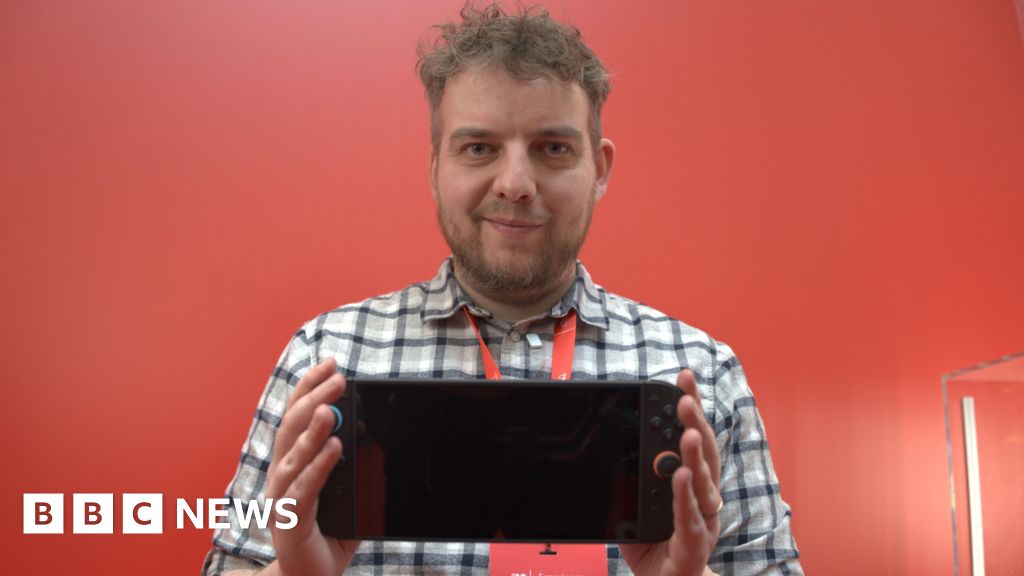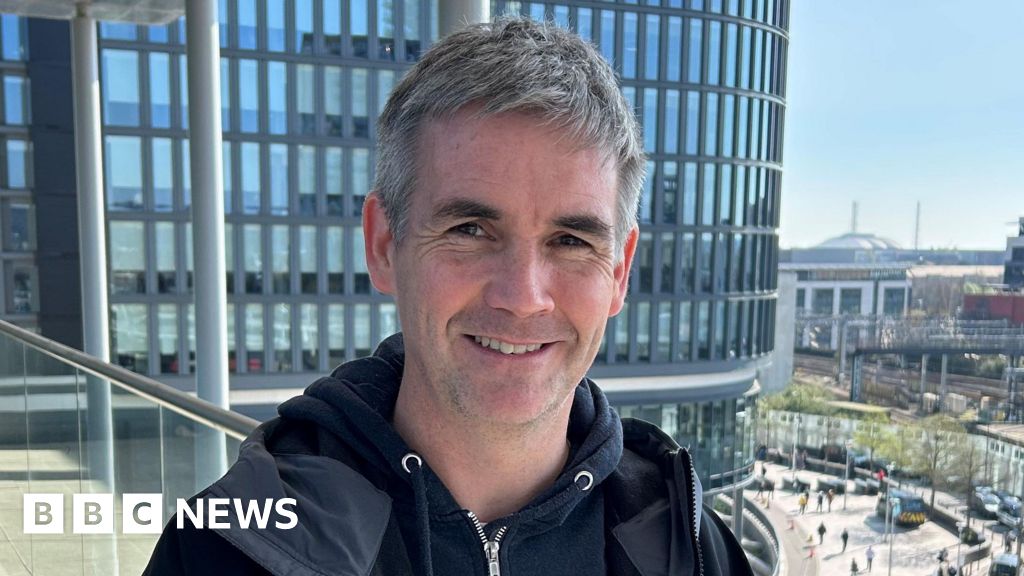ARTICLE AD BOX
 Image source, Hologram Zoo
Image source, Hologram Zoo
Brisbane's Hologram Zoo features 50 different creatures
By Phil Mercer
BBC News, Sydney
At this zoo visitors dodge stampeding elephants, peer into the gaping jaws of a hippopotamus and pat friendly giraffes.
Such thrills are possible at Australia's Hologram Zoo, which opened earlier this year, and features 50 lifelike displays from dinosaurs to gorillas crafted from lasers.
Its creator says it's the world's most futuristic animal theme park, using technology that has never been used anywhere else.
"There's lots of laughing, lots of screaming… but when the 30-metre whale goes by, for some reason, everyone goes silent like they are in awe and reverence of such a magnificent creature," explains Bruce Dell, the chief executive of Axiom Holographics and creator of Hologram Zoo.
It is digital trickery, hoodwinking the brain into seeing something that isn't really there.
"You are projecting an object in the air that appears to be real because as you walk around it you are seeing it from all sorts of different angles. So, you use laser light and we project these objects into the air," he tells the BBC.
"The animals come into the room, they walk through the tunnel and you pat them just like in the movies. You're seeing an animal made of light in front of you. You'll go out and reach out your hand and pat a lion."
Image source, Hologram Zoo
Image caption,The hologram system tracks everyone in the room
The hologram show uses a new "depth" technology that makes the animals seem big. The moving images are brought to life by a laser projector containing crystals that let simple sunglasses worn by guests separate fields of light.
Crucially, there's a device that knows where everyone in the room is, creating a tailored virtual experience. The hologram shows also come with sensory technology, allowing visitors to smell the flowers and trees.
The technology that illuminates Axiom's theme park in suburban Brisbane is shining elsewhere. Bruce Dell tells the BBC his company has contracts with aerospace giant Airbus and US corporation Honeywell, as well as building a hologram aquarium for a luxury hotel owned by Bill Gates in the Maldives.
The founder of the Hologram Zoo says he's rethinking the industry by cutting costs and enhancing quality, by making components at a purpose-built factory in the Australian state of Queensland.
"Everyone is expecting the hologram revolution. It is something we see in science fiction and we should have had it by now. But holograms have always been so expensive. We felt there were some things do there to make them a lot cheaper," Mr Dell explains.
"Holograms normally take tremendous amounts of computing power. You'll normally have 10 computers hooked together to do them. Because of our good understanding of how computer memory management works, we've been able to make algorithms that reduce holograms down to just one computer."
In Canberra, another race towards reimagining the concepts of holography is well underway. Researchers at the Australian National University (ANU) say they're disrupting ancient laws of physics that use lenses and mirrors to spread light.
The ANU team is experimenting with meta-optics, or nano-photonics. When light beams pass over tiny meta surfaces, which are just millimetres in size, they can manipulate the wave, similar to a traditional lens, but at a much smaller scale.
"We are trying to push into the future of these technologies. When we are able to miniaturise these lasers to put them on a small portable device is when we will make the leap," said Prof Dragomir Neshev from the ANU's Research School of Physics. "At the moment, everything is based on where the holograms were at the very start in the '60s and '70s."
Meta-surfaces could turn reading spectacles into night-vision glasses, replace diagnostic blood tests with breath tests, and tell us when food in the fridge has gone off.
Prof Neshev believes holographic techniques could be "transformational" for medicine, and help to guide surgeons deep inside the body of a patient at a cellular level with real-time images.
Hologram techniques have also inspired what's described as a "world-first collaboration" between psychology and theatre at the Queensland University of Technology (QUT). Alex is an hour-long play about a child who has lost her father, and charts her attempts to find him as well as her own journey of self-discovery.
It is embedded with a strong mental health message. The show's producers say it is an "arts-based clinical intervention for people with eating disorders".
"Alex looks very much like a traditional play, any other trip to the theatre, until the holographic image appears. It looks more like the film Roger Rabbit; real actors and animations inhabiting the same theatrical space," says Dr Shane Pike, the play's author from QUT's School of Creative Practice.
"The technology used to create Alex is both surprisingly simple and complicated at the same time. Basically, this is augmented reality (AR) without the need for need for wearable devices, goggles or a smart device that has to be held up in order for the AR image to appear on the screen."
Image source, Queensland University of Technology
Image caption,Queensland University of Technology created a play featuring the hologram Alex
While holograms create a completely virtual world, augmented reality at QUT uses a special effects screen, called a Hologauze, to bring the play's virtual characters to the stage.
"It's a special material that appears invisible to the naked eye, but when lit with an image projected from our high-powered projectors it is captured by the gauze and appears as an embodied character. We connect the animations through motion-capture technology to a real-life actor backstage," Dr Pike tells the BBC.
Australian researchers hope to eventually create lifelike moving holograms that display straight from a smart phone screen.
Bruce Dell has recently curated a hologram dinosaur show at the Australian Museum in Sydney. He sees an omnipresent future for holograms, including floating hamburgers and pizzas at fast food restaurants, and virtual 3D gems to entice buyers at jewellery shops.
"Often we talk about technology revolutions; television, cars, mobile phones, light bulbs, and the question is what is the next one? Well, the media has been telling us, science fiction has been telling us for years, the next one is the hologram revolution, having holographic things everywhere," he predicts.

 1 year ago
30
1 year ago
30








 English (US) ·
English (US) ·